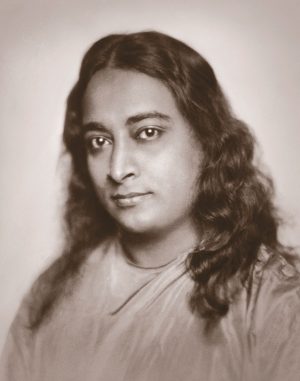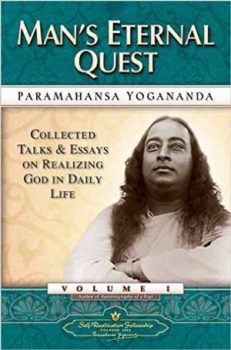On January 5, 1893, a child was born to a devout couple in India. This boy grew up to become the yoga master we know as Paramahansa Yogananda. Yogananda is one of the first East Indians to bring yogic principles and techniques to America. He was a prolific writer and an energetic speaker, filling the largest auditoriums of the day. Yogananda passed away in 1952, leaving his followers with a large organization, Self-Realization Fellowship (SRF), several temples, and a mountain of reading materials. His most famous book, Autobiography of a Yogi (aff link), has been the starting point for many serious yogis around the world.
For those interested in knowing more about Paramahansa Yogananda’s continuing work, visit yogananda.org. Additionally, the film Awake gives a detailed account of his life and work. The movie may be purchased or rented online. It’s an easy and entertaining way to keep company with a true, great, and fairly recent master.
Learning a master’s life story is a very small part of keeping good company. Of much greater importance is reading, understanding, and assimilating the master’s teachings, and making the teachings an integral part of your own being. It’s not necessary to grasp every subtlety of a master’s teaching initially; one’s attitude should include open-mindedness, a willingness to learn, and taking the time to consider and practice the teachings. Yoga is not an “armchair philosophy.” It should be practiced and experienced. This practice will make an indelible impression on your heart and mind. You will grow spiritually by leaps and bounds.
Commentary on “Making Religion Scientific” (1940)
Below is my commentary on an essay from Man’s Eternal Quest (aff link), a book of presentations given by Paramahansa Yogananda during his American ministry, which began in 1920. “Making Religion Scientific” is a talk given in 1940.
Understanding anyone requires an understanding of the terms they use. This is especially true when discussing yoga philosophy. By religion, Paramahansa Yogananda means yoga, which he further defines as union of one’s individual soul and Divine Consciousness, God. He describes the experience of that union as one of pure happiness, infinite joy. By scientific, Yogananda means practical methods that have consistent results. He urges us to meditate and live a God-centered life, and he promises the result of that effort—the proof of God’s very existence.
My own Gurudev often emphasizes this: as is the effort, so is the fruit. The benefit you receive from your meditation practice is directly proportional to the effort you put into it.
Paramahansa Yogananda warns us that if we don’t put in enough of the right kind of effort, we will fail to experience the joy of God within. We may feel peaceful and happy for a little while—after a little effort—but it will fade away quickly if we don’t continue our meditation practice with devoted persistence. He uses the familiar analogy: If you wish to find pearls, you must dive deeply many times. If you don’t find pearls after just a few shallow dives, you can’t blame the ocean. It is your effort which is to blame.
We live in a world of instant products and immediate gratification. Our minds learn to expect quick rewards for little work. But the truly valuable things in life are either free—like the love of our parents—or come at great cost. If deep and constant inner peace is what we want, then we must expect to pay the price. Don’t be discouraged if you aren’t as disciplined as a saint. Saints are not born disciplined; they have a sincere desire to achieve their goal, and they work for it. You can too, starting right now, today and every day. Fail and restart, repeat, and eventually you will succeed.
Practice
Write on a small piece of paper or sticky note: “I will meditate today, tomorrow, and every day thereafter.” Place that note where you can’t miss it, like on the bathroom mirror or your pillow. Read it aloud every time you notice it. And meditate—today, tomorrow, and every day thereafter.
Chityānanda has been a disciple of Svāmī Gurupremānanda Sarasvatī since 1975. She teaches meditation and yoga as a spiritual path in Santa Cruz, California.



Connect With Us